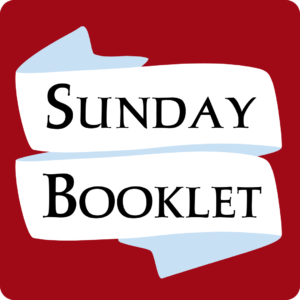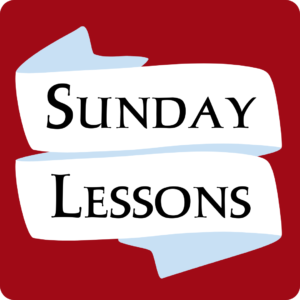Worship Guide for Ash Wednesday, March 5, 2025
Like TV Guide, but from God! Find the text of the Prayers of the People and Sermon below. Use the buttons provided to find other worship materials.
To see the Worship Guide for other weeks, click here.
Prayers
Bless us, O God, in this holy season, in which our hearts seek your help and healing; and so purify us by your discipline that we may grow in grace and in the knowledge of our Lord and Savior Jesus Christ; who lives and reigns with you and the Holy Spirit, one God, for ever and ever. Amen.
Almighty God, you have created us out of the dust of the earth: Grant that these ashes may be to us a sign of our mortality and penitence, that we may remember that it is only by your gracious gift that we are given everlasting life; through Jesus Christ our Savior. Amen.
Remember
The Rev. Linda Mackie Griggs
“Remember that you are dust, and to dust you shall return.”
For most of us, the operative term in this exhortation is “dust.” The dust of the earth, the cosmic dust of Creation, the dust of the ashes on our foreheads, representing our mortality and our sinfulness. All the dust.
Yes, and.
“Remember.”
It’s not just about dust. Ash Wednesday is an act of memory, beginning with the ashes themselves.
This past Sunday, near the end of the Pancake Breakfast, a few folks gathered in the (very cold) Memorial Garden to burn palms; to make the ashes that we’ll use today. While many churches, including St. Martin’s, have opted for purchasing ashes from what I glibly call “the ash store”, actually burning the palms in-house has been a tradition in the wider Church for centuries.
The use of the palms from the previous year’s Palm Sunday liturgy to make ashes is an act of memory.
Remember last Spring, waving the light green, fragrant, dewy fronds as we sang, “Hail Thee, festival day!” Remember holding them as we heard the story of Jesus’ triumphant entry into Jerusalem. Remember the whiplash of immediately hearing of Jesus’ passion and death; the palms now forgotten as we cry, “Crucify him!” Remember, perhaps, folding them carefully into crosses.
Do we remember noting the irony of transforming the palms of praise into symbols of Jesus death?
We might remember seeing leftover palms a few days later, now dry and brittle. What do we do with them? We’re reluctant to just put them in the trash. They’ve been blessed, after all. They are reminders.
Reminders of the joyful shouted halleluiahs of Palm Sunday, so quickly set aside; desiccated into silence, complicity, and betrayal.
Remember that you are dust, and to dust you shall return.
So, we remember the palms.
Remember also the mark of the cross on your forehead. Today it will be in ashes, but at your baptism it was in holy oil: “You are sealed by the Holy Spirit in Baptism and marked as Christ’s own forever.”
Remember? Maybe not, if you were baptized as an infant. But the signing of the cross on our bodies is a reminder; we are reminded of God’s irrevocable hold on us every time we renew our Baptismal Covenant, every time we receive a blessing or anointing, or cross ourselves:
“I have been marked as Christ’s own. Forever.”
So, in the action of signing with the cross, as well as in the ashes themselves, we remember.
Yes, but.
How does this remembering carry us into and through Lent? How do these acts of memory become interwoven with our journey to the cross, the tomb, and Easter morning?
As we embark today on the journey of Lent, we will be reminded of the work that we have to do and the disciplines that will help us accomplish it. Maybe accomplish is too strong a word—that would imply completion. We know that acknowledging our sinfulness and our mortality is a lifelong project, which is why we return to it every Lent; looking in the mirror and peeling back the layers of everything that separates us from God, from one another, and from Creation—everything that separates us from our true selves. Layers of egocentricity, anger, resentment, fear, self-loathing, shame. And all of this interwoven with our own memories of things done and left undone. Things that make us cringe.
Our past unfaithfulness: the pride, hypocrisy and impatience of our lives…our self-indulgent appetites and ways…our dishonesty in daily life and work…our blindness to human need and suffering…our waste and pollution of your creation…
All of this, and more. We are exposed before God.
Accept our repentance, Lord.
Yes, and.
With God’s help, as we peel away the layers, we are blessed by the uncovering of new memory that emerges from seeing ourselves through God’s eyes; deeply buried memory of who and whose we are and were created to be; of our capacity for humility, compassion, and vulnerability. In short, we recover the memory of our yearning for God, for deeper relationship with the One who created us and calls us Beloved.
Remember.
You are dust; part of God’s first act of Creation. Created from love which enfolds you even now in your sinfulness and sorrow; the love which will be your final home.
We are called to be faithful to the work of a holy Lent: called to repentance and prayer; to reading and pondering God’s holy word in scripture; to acts of self-denial and generosity. It is not an easy journey, and God knows that we will backslide in spite of our best intentions. But we’re not embarking on a solitary journey. It is a journey in community. Together we can be faithful, in companionship with one another.
Remember that you are dust, and to dust you shall return.
And it is in the journey of remembering that we will be able to face the future with courage and resilience as people of Resurrection. Amen.





